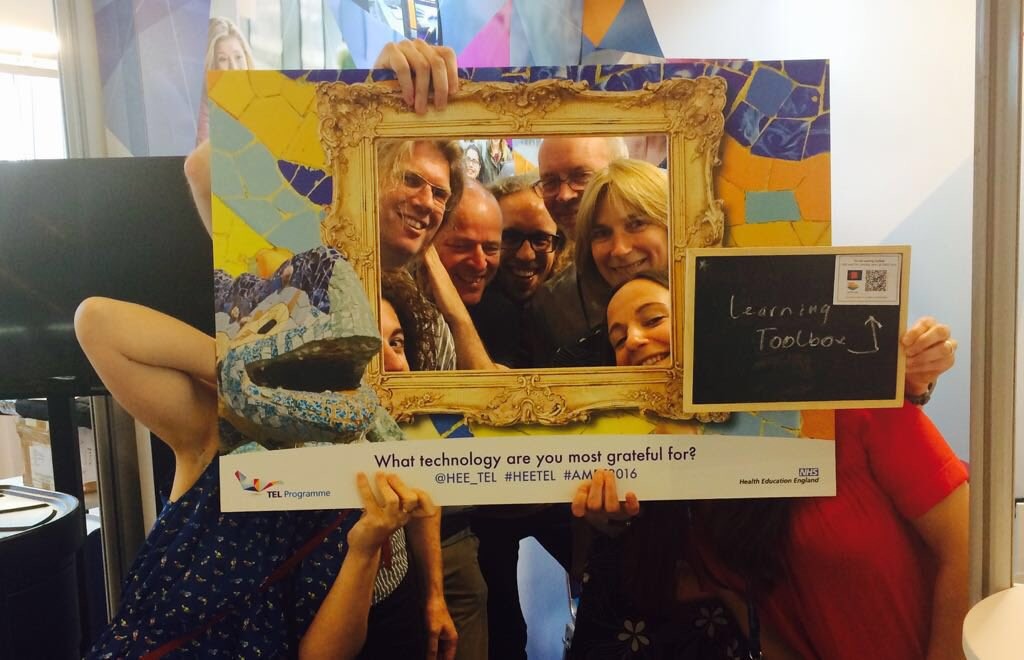With my previous posts I started to write a serious of blogs with the heading “My journey with Institut Technik & Bildung (ITB)”. These blogs are intended to support the work (or follow-up) of the ITB “Klausurtagung” that will take place on Friday 9. December 2016. The inspiration to write personal blogs that deal with the history of ITB comes from the Klausurtagung 2015. With this series I try to compensate my absence due to health issues and to pass a message, wah has happened at different times and with different themes. In the first post I tried to cover my first encounters – my study visit in 1989 and participation in the Hochschultage Berufliche Bildung 1990 conference. In the second post I gave insights into the Modellversuch Schwarze Pumpe and to related European cooperation projects 1995 – 1999. In the third post I discussed the Europrof project, the Unesco International TVET meeting in Hangzhou 2004 and its follow-up. In the fourth post I discussed the TTplus project and the European Consultation seminars in the years 2007 – 2010. In the fifth blog I discussed the Work & Learning Partners (2005-2006) and the Euronet-PBL (2009-2010). In this sixth and final post I will discuss the expedition with the Learning Layers project (2012 – 2016).
Here, it is worthwhile to emphasise that this ‘journey’ has taken me and my ITB colleagues through different periods of European cooperation. Not all of our efforts have been that successful. Yet, we have achieved respectable results and we have learned a lot. It is also important to emphasise that there is a strong continuity with underlying theoretical concepts and guiding principles for R&D activities (participation, dialogue and social shaping – all in one word: Gestaltung). With this interim conclusion I try to give a nutshell picture of the latest leg of the journey – our expedition with the EU-funded Learning Layers project (on which I have been blogging the last four years).
The starting points of the Learning Layers project
Thae Learning Layers (LL) project was funded by the 7th Framework Programme of Research, Technology and Development of the European Uninon (EU FP7). The aim was to support informal learning in the context of work and organisations by using digital tools, web resources and mobile devices. Special emphasis was given on addressing SMEs (and their networks) as users and to scale up innovations during the project. As a contrast to the previous projects discussed in this series of blogs, our (= ITB) starting position was completely different:
- Firstly, the previous projects had mainly been initiated and/or led by ITB and carried out with a partnership that we new of the vocational education and training (VET) research community. In the Learning Layers project we joined in a consortium that was led by research institutions from the fields of educational technology, software solutions, knowledge management and infrastructure architectures. Pontydysgu had made the contact between us and the emerging project consortium.
- Secondly, the project plan had initially envisaged only one field for piloting (the healthcare sector in England, represented by General Practice stations affiliated with the National Health Service, supported in the project by Leeds University). In the final phase of the preparations the construction sector from Germany (supported by ITB) was included into the project plan as the second field for piloting.
- Thirdly. the project concept was relying on a good synchronisation of different contributions from the technical partners in a co-design process, so that the users could easily take up the tools (with the support of an integrated scaffolding model). In this concept there was no clear pre-defined role for us (other than coodination fo the sectoral activities with the application partners in the German construction sector.
The above mentioned plan and project concept were reflected in the set of work packages in which we found our role primarily in the WP7 (deployment and promotion of LL tools in the pilot sectors). However, during the project the ‘cards were mixed and redistributed’ in the processes of co-design, tool development and bringing them to users.
The starting points of the construction pilot
Looking back, the starting point for the construction pilot was somewhat similar as the earlier educational pilot projects (Modellversuche) and the innovation programme on Work and Technology (Arbeit und Technik). Obviously, we could consider that our role was similar to the accompanying research (Begleitforschung). Yet, we had to start with a relatively open research agenda visà-vis the predecessor projects. And, compared to our colleagues in the healthcare sector (Leeds University) we both had an intermediate position between the technical partners and the application partners. Ye, in the course of the project, the pilot activities and our roles developed into somewhat different directions. I will try to summarise the points below:
- As a contrast to the Modellversuche or the AuT programme, the accompanying research team of ITB could not take a pedagogic pilot concept and related working hypotheses (Versuchshypothesen) or explicit programme goals (AuT-Gestaltungsziele) as points of reference.
- Concerning the project concept, the accompanying research team had to take an intermediate and interpretative role regarding the achievement of project goals in the context of apprentice training and within organisational learning in construction sector.
- Concerning the co-design processes, the healthcare pilot worked with three parallel design ideas (and emerging tools) towards a integrative approaches. This process was supported by separate tool development teams of technical partners. In the construction pilot the overarching design idea went through two iterations before the co-design work took the course towards an integrative toolset – the Learning Toolbox. This development process was prepared jointly by the application partners, research partners and intermediate partners, whilst the technical partners joined in later.
In this respect the accompanying research team in the construction pilot had to reconsider its tasks and contributions and to take new roles in the course of the project work.
The R&D dialogue in Bau-ABC – the iterative process
In the co-design process in Bau-ABC (intermediate training centre of of North-German construction industry) was to digitise the Bau-ABC White Folder (collection of training materials, worksheets and reporting documents) and the related training and learning processes. In the initial phase the ITB team engaged heavily Bau-ABC trainers and apprentices by work process analyses and storyboard workshops to identify potential points of intervention (for using digital tools). In the subsequent co-design workshops a lot of attention was paid on haping the tools in such a way that they support vocational learning – and reflective learning. However, in two iteration cycles the joint conclusions was reached to give up the over-ambitious digitisation agenda. Instead, the course was taken to develop a flexible and integrative toolset – the Learning Toolbox – to provide access to web resources, to create own resources and to share knowledge and communicate in real time.
Immediately after this shift into new phase the ITB team together with the LTB developers and colleagues from Bau-ABC started outreach activities that engaged more construction sector professionals and apprentices in discussions on the emerging toolset – on the elementary functions and what could be added upon. These talks were carried out in the Brunnenbauertage trade fair (in Bau-ABC), in the Demo Camp workshop event (also in Bau-ABC) and in the NordBau trade fair (in Neumünster). Also, a closer cooperation with the first interested construction companies was started at this phase.
The training schemes as capacity building and contribution to tool development
Already before the abve mentioned shift in the co-design process the partners in the construction pilot had agreed to start a multimedia training scheme for the trainers in Bau-ABC. The first scheme was developed step by step to equip the participants with basic multimedia competences and capability to assess possibilities for using existing apps or tools and for co-creating and co-developing new ones. In this context the Bau-ABC trainers started working with their domain-specific blogs (Zimmererblog, Maurerblog, Tiefbaublog, Brunnenbauerblog) and to develop them into repositories of their own training materials and supporting content. After the first multimedia training the Bau-ABC trainers (who had participated) produced series of videos pointing to specific contexts for using the toolset to optimise work processes and to support workplace-based learning.
In the next phase a more overarching training programme, based on the “Theme Room” concept (initiated by Bau-ABC trainers) was implemented as a ‘whole organisation’ campaign involving all training staff of Bau-ABC. The training scheme consisted of four Friday afternoon workshops in November 2015 with focus on two main themes – ‘Use of Social Media’ and ‘Production/Use of Digital Learning Materials’ – with two workshops for each theme. The training staff in Bau-ABC (Rostrup) was divided into four parallel groups (and a fifth group in the branch centre Mellendorf). Each group was tutored by one Bau-ABC trainer and a researcher from ITB team. Altogether this campaign gave a strong push for using digital tools, and web resources in the apprentice training. Moreover, it paved the way for improvements in the infrastructure to enable the piloting with the Learning Toolbox – within the apprentice training of Bau-ABC.
The breakthrough with Learning Toolbox and the completion of the project work
In February-March the Learning Layers project project started the active use of Learning Toolbox in the apprentice training for selected pioneering trades. After the Kick-off event in March the trainers started to spread the piloting via peer tutoring and via joint projects involving several trades. This process was supported by accompanying researchers from ITB, the Learning Toolbox developers and visiting researches from Innsbruck, Espoo and Tallinn. With the jointly implemented evaluation studies in May, August and September we could conclude that the trainers in different trades had found somewhat different ways to use Learning Toolbox – and that the apprentices in their respective trades responded positively to their approaches.
Parallel to the these final activities the Learning Layers partners have prepared their contributions to the final deliverable – a comperehensive reporting website, currently called as ‘the Layers Web’. The main contributions of the construction pilot include the following:
- Impact Cards: C-01 on specific pilot with AchSo video annotation tool in Bau-ABC; C-05 on pilot activities in Verden; C-11 on the use of Learning Toolbox in Bau-ABC, C-12 on Training schemes in Bau-ABC.
- Learning Scenarios: S-02 on use of Learning Toolbox at a construction site (Verden); S-09 on Learning Toolbox as support for Handlungsorientiertes Lernen in Bau-ABC; S-10 on changing and sustaining practices in the pilot sectors.
- Methodology documents: M-10 on accompanying research and participative design; M-11 on Training interventions as capacity-building.
These final documents and many other working documents have been made available as draft versions on the following ResearchGate project spaces:
The follow-up prospects
The signals from pilots in Bau-ABC have been positive and they have been picked up. Following the example, the application partner organisations in Verden have made their steps in using Learning Toolbox in construction work and in promoting the tool to other actors in construction sector. Based on these pioneering cases, the ITB team has recently organised bilateral talks with interested companies. Some spin-off projects have already been started with other construction sector partners before the Learning Toolbox was fully available (to be integrated to their working concepts). At the moment the ITB team is involved in talks to prepare proposals with new knowledge on the usability of Learning Toolbox in the projects.
I think this is enough of the Learning Layers project – of our experiences, achievements and follow-up prospects. To me it is important to not that this has been an exceptional project with richly documented activities and sustainable results to take further by follow-up activities. And for this reason it is important to continue the ‘harvesting’ of results while preparing further follow-up initiatives. It has been and it it is worthwhile.
More blogs to come …
 According to the
According to the 
